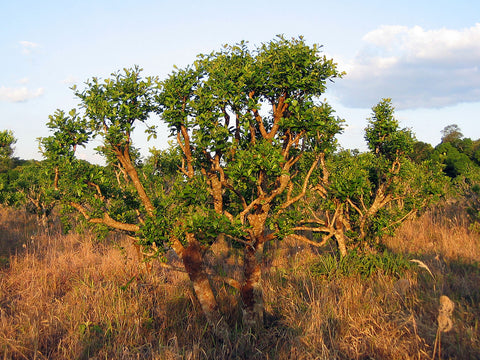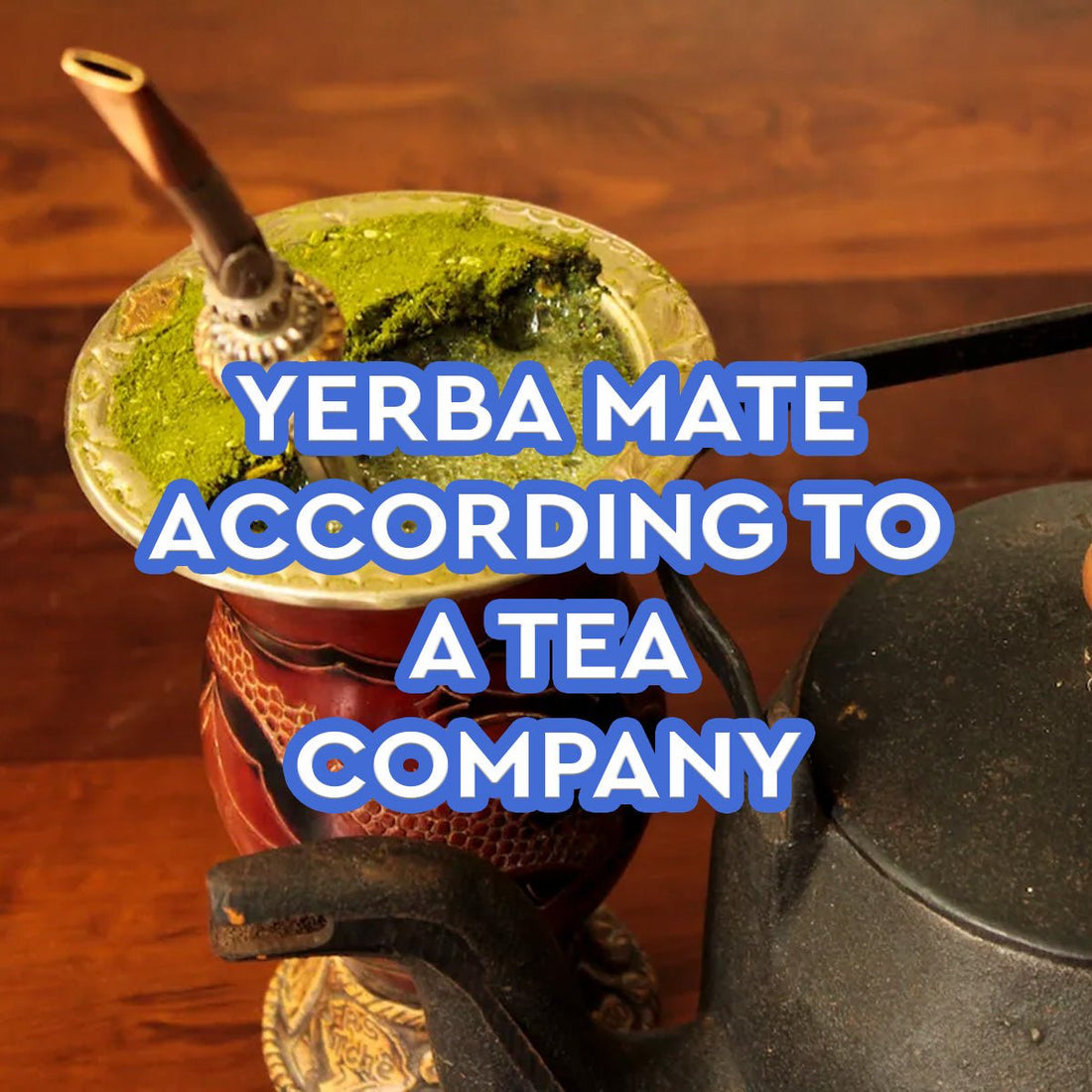Introduction
This week we’re looking at the world of yerba mate.
When people in the English speaking world think about caffeinated drinks, the vast majority of people’s minds will go to tea and coffee. In fact most people would understandably think that those are the only two caffeinated drinks of any real popularity that exist.
And they would be wrong!
Go anywhere in South America and you will see almost everyone drinking ‘yerba mate’ from a gourd shaped cup known as ‘un mate’ through a straw called ‘una bombilla’.
To be completely honest, your author thought yerba mate was actually made from camellia sinensis but since it is in fact made from a type of holly tree, it’s not technically tea but an entirely different drink.
But it is definitely tea-adjacent so we’re going for it. You brew dried leaves in water so it’s close enough for jazz. Prepare for many comparisons to justify this blog post.
Strap yourselves in for a fast paced ride through South American yerba mate culture.
What is yerba mate?
Yerba mate is a traditional South American beverage made by steeping the dried leaves and stems of the Ilex paraguariensis plant.
Ilex paraguariensis is a species of holly native to South America, particularly in regions of Paraguay, Brazil, Argentina, and Uruguay. They can grow as tall as 15 m but in commercial farming they are grown in rows and pruned to a more manageable height for cultivation. Pruning also encourages the plants to invest more energy into leaf production, ultimately leading to higher yields.

Harvesting is usually done by hand, with workers selectively picking the leaves from the branches. The timing of the harvest can influence the flavour and quality of the yerba mate.
Once harvested, the leaves and stems are spread out to dry. Traditionally this would be done by leaving them out in the sun but modern processing facilities usually use drying ovens or kilns to speed things along.
Some manufacturers will age their leaves to enhance the flavour and remove some of the harsher flavour compounds.
The leaves are then cut and ground into smaller pieces either using machinery or hand cutting with machetes.

How much caffeine is in yerba mate?
In short - more than tea, less than coffee.
The long answer is that it depends on a variety of factors like how long it’s brewed for, the type of plant it’s made from and how it’s processed. We’ll revisit this later when we look at yerba mate’s role in sporting culture.
Here is a rough comparison:
250 ml cup of coffee - 95 milligrams of caffeine.
250 ml cup of tea - 45 milligrams of caffeine.
250 ml cup of yerba mate - 80 milligrams of caffeine.
How do you make yerba mate?
In all honesty, it’s a bit of a faff including quite a bit of fancy equipment. In our biased opinion you should probably just stick to tea since it’s so ridiculously easy to prepare. Teabag. Mug. Kettle. Done.
But in the interests of education, here is a crash course.
Gather your materials
You'll need a few essential items to prepare yerba mate.
Bombilla. Metal drinking straw with a filter. Often made from silver, sometimes with a copper drinking end. Copper has antimicrobial properties. People will often share straws so this is a bonus. The non-drinking end is flat with holes to filter out the fine leaf.

Yerba mate gourd. Also known as a 'mate'.

Loose-leaf yerba mate.
Hot (but not boiling) water. 65°C to 70°C is optimal for flavour extraction and preventing bitterness.
Thermos flask. Optional but very common. People often include a thermos full of hot water to their everyday carry essentials. Wallet, phone, keys, special cup, special copper tipped straw, loose leaf yerba mate, bulky thermos. CHECK. We can leave the house!

Flasks for mate often have a precision pouring spout.
Prepare the mate
Fill your yerba mate gourd about two-thirds to three-quarters full with loose-leaf yerba mate. Use your hand to tilt the gourd slightly and gently shake it to create a slope, allowing the yerba to gather on one side. There is some disagreement online as to whether or not you need to do this but here are a few of the listed reasons for doing so:
- It improves flavour by gradually moistening it and releasing its compounds.
- It prevents clogging the bombilla. Placing the straw at the bottom of the slope, near the lower end of the gourd, helps to prevent the filter end from getting clogged with loose yerba.
- Enhances aesthetic appeal. This one seems to be the main reason for people outside of South America. Basically, it looks nice and gives the person who has just turned down your offer of a lovely cup of tea an opportunity to talk about the drink they just unpacked from their hemp satchel.
This video explains why people bank the loose leaf to one side.
Insert the bombilla
Push it down to the bottom of the gourd at an angle, with the filter end near the bottom of the gourd and the spout end pointing upward.
Moisten the yerba
Before adding hot water, pour a small amount of room temperature or cold water into the empty space in the gourd. This helps prevent the yerba from scalding when hot water is added. This suggests that you might actually need to bring a bottle of cool water as well. Hopefully you are feeling strong.
Pour the hot water
Pour into the hollow bit you made earlier, filling it to the top.
Sip and enjoy
Sipping slowly is highly recommended. When your author tried it for the first time, he severely scalded his tongue, possibly informing the tone of this blog post many years later.
Refill and repeat
As you continue to drink the yerba mate, you can refill the gourd with hot water as needed. The yerba can be infused multiple times, and each refill may offer a slightly different flavour profile.
Etiquette
It’s interesting that across continents, so many customs of etiquette are so similar. From Japan to Russia to Morocco, the codes of respect are similar wherever you go. Treating the drink with reverence and respect is a constant.
Drinking in turn
Yerba mate, much like tea or coffee, is a highly communal drink. According to this informative video, it goes like this:
- The host or owner of the set up fills the mate with water, drinks it down and fills it back up.
- It then passes to the first person on the right. They drink it down and pass it back.
- You fill it again then pass it to the third person who drinks and passes it back.
- Repeat.
This short video provides an excellent crash course in mate etiqutte.
Respecting the cebador (server)
In a group setting, there is often a designated server known as the cebador responsible for preparing and serving the mate. The role of the cebador is respected, and their decisions regarding the preparation and serving of the mate are honoured.
Accept!
Even if you’re not particularly thirsty, you should probably just say yes and accept it graciously.
Receiving the mate
When receiving the mate, hold the mate firmly with both hands and drink the entire portion of mate served to you without pausing. This demonstrates appreciation for the mate and ensures that everyone gets an equal share.
Yerba mate in sport

Leo Messi and Luis Suárez enjoying mate.
Keen eyed football fans may have noticed some of the best South American footballers drinking yerba mate.
Leo Messi, Luis Suárez, and Antoine Griezmann have all been snapped drinking yerba mate before and after games. But why, I hear you ask?
Yerba mate is thought to enhance physical endurance by way of increasing the utilisation of carbohydrates so it has that going for it.
It’s also caffeinated so could give a boost in energy and mental awareness.
Finally, yerba mate has been associated with cardiovascular health benefits, including improved blood flow, lower blood pressure, and reduced risk of heart disease. These effects can contribute to overall physical fitness and performance, especially in endurance-based sports.
In the opinion of Chanui, they might as well be drinking a lovely cup of tea as literally all of these health benefits are found in tea.
The most likely explanation is that they just like drinking it…
Final thoughts
While yerba mate may not be everyone's cup of tea, its rich cultural heritage and unique flavour profile probably make it worth a try. Chanui is confident you’ll come crawling back to tea.
It is harder to get hold of in English speaking countries, more expensive and very bitter but at least it requires quite a lot of specialist equipment to enjoy it!
In all seriousness, it is a drink with as much rich cultural history as tea and coffee but don’t expect a Chanui branded box any time soon!

